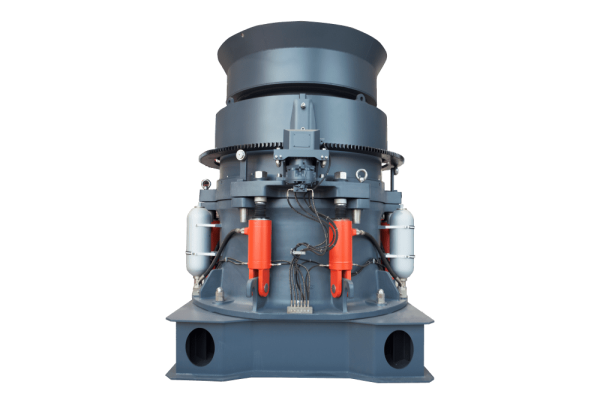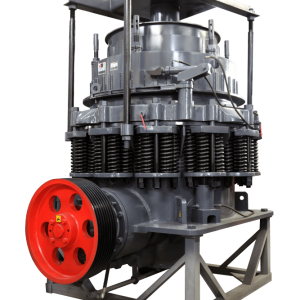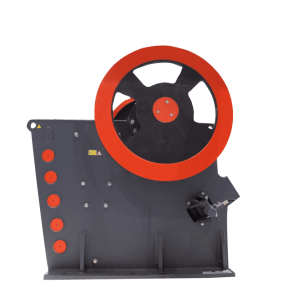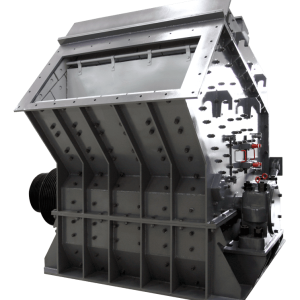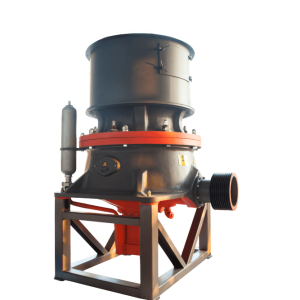Don't miss our holiday offer - 30% OFF!
HPT Multi-cylinder Hydraulic Cone Crusher
Higher crushing ratio, larger processing capacity, better granularity and shape of finished materials
Based on the structure of traditional multi-cylinder hydraulic cone crusher with the fixed main shaft and the eccentric bushrotating around the main shaft, and the laminating crushing principle,ZENITH greatly optimizes the structure of HPT Multi-cylinder Hydraulic Cone Crusher, which greatly improves the performance and crushing capability. Meanwhile, the hydraulic lubrication system of HPT Cone Crusher ensures more intelligent and more stable operation.
Materials:Granite, diabase, basalt, pebble, limestone, dolomite, metallic ores and non-metallic ores, etc.
Product Advantages
HPT Hydraulic Cone Crusher applies advanced PLC electrical system, which can continuously monitor the crusher and provide alarms to display various operating parameters.
HPT Cone Crusher optimizes the transmission parts and the lubrication and sealing structure. It has strong holding capacity, larger crushing power, higher efficiency yet lower noises.
HPT Cone Crusher adopts the laminating crushing principle to crush materials. The final products are cubical and of high content of fine powder.
HPT Cone Crusher is equipped with several crushing cavities. Operators can freely make choices among different cavities by changing only a few spare parts like the lining plate.
Working Principle of HPT Cone Crusher
When the HPT Hydraulic Cone Crusher is working, the motor drives the transmission shaft rolling through the pulley and the V-belt. The transmission shaft drives the eccentric bush rolling around the main shaft through the large and small bevel gears.The eccentric bush drives the moving cone to do the swing motion, to make the moving cone sometimes close to and sometimes far from the concave. Then the materials are impacted, extruded constantly in the crushing cavity formed by concave and mantle and then are crushed and the broken materials are discharged from the lower port.
Parameters
| Model | Cavities | Feed opening (mm) | Minimum discharging size (mm) | Capacities (t/h) | Maximum installed power (kW) | Overall dimension (mm) |
| HPT100 | C1(Extra Coarse) | 140 | 19 | 75-140 | 90 | 1705×1510×1583 |
| C2(Coarse) | 100 | 13 | 60-110 | |||
| M(Medium) | 70 | 9 | 52-100 | |||
| F1(Fine) | 50 | 9 | 50-95 | |||
| F2(Extra Fine) | 20 | 6 | 45-90 | |||
| HPT200 | C2(Coarse) | 185 | 19 | 145-250 | 160 | 2135×1750×1927 |
| M(Medium) | 125 | 16 | 135-235 | |||
| F1(Fine) | 95 | 13 | 115-220 | |||
| F2(Extra Fine) | 75 | 10 | 90-190 | |||
| HPT300 | C1(Extra Coarse) | 230 | 25 | 220-440 | 250 | 2725×2110×2871 |
| C2(Coarse) | 210 | 19 | 190-380 | |||
| M(Medium) | 150 | 16 | 175-320 | |||
| F1(Fine) | 105 | 13 | 145-280 | |||
| F2(Extra Fine) | 80 | 10 | 110-240 | |||
| HPT400 | C1(Extra Coarse) | 295 | 30 | 300-630 | 315 | 2775×2370×2295 |
| C2(Coarse) | 251 | 25 | 285-560 | |||
| M(Medium) | 196 | 20 | 250-490 | |||
| F1(Fine) | 110 | 13 | 180-345 | |||
| F2(Extra Fine) | 90 | 10 | 135-320 | |||
| HPT500 | C1(Extra Coarse) | 330 | 38 | 425-790 | 400 | 2800×3480×4050 |
| C2(Coarse) | 290 | 30 | 370-700 | |||
| M(Medium) | 210 | 22 | 330-605 | |||
| F1(Fine) | 135 | 16 | 270-535 | |||
| F2(Extra Fine) | 95 | 13 | 220-430 | |||
| HPT800 | C1(Extra Coarse) | 350 | 38 | 570-1200 | 630 | 3970×3345×4235 |
| C2(Coarse) | 299 | 32 | 520-1050 | |||
| M(Medium) | 265 | 25 | 475-950 | |||
| F1(Fine) | 220 | 16 | 370-800 | |||
| F2(Extra Fine) | 150 | 13 | 310-600 |
